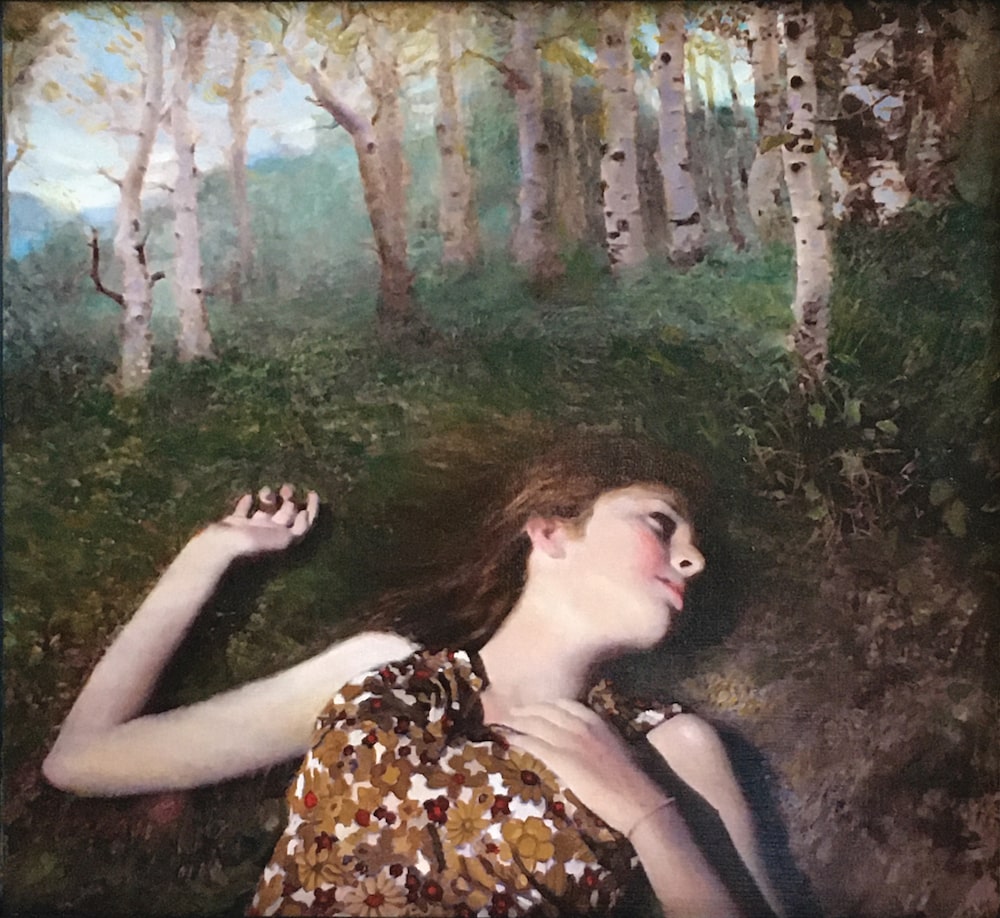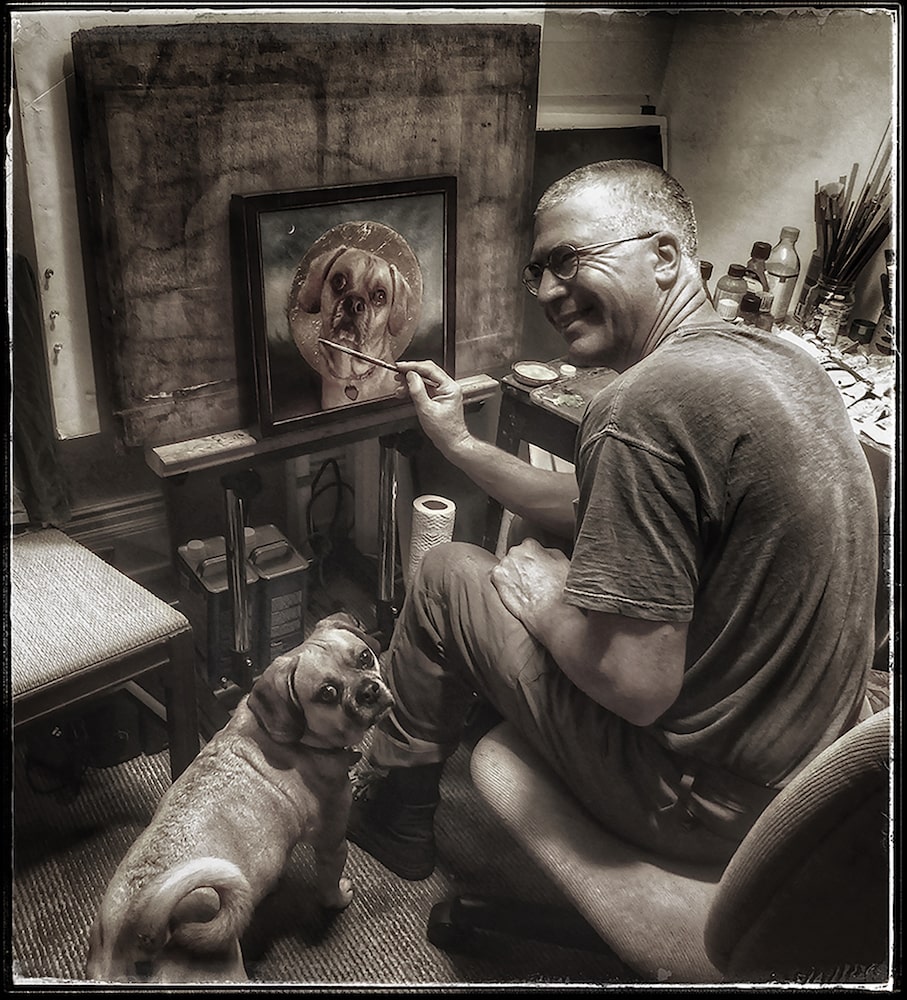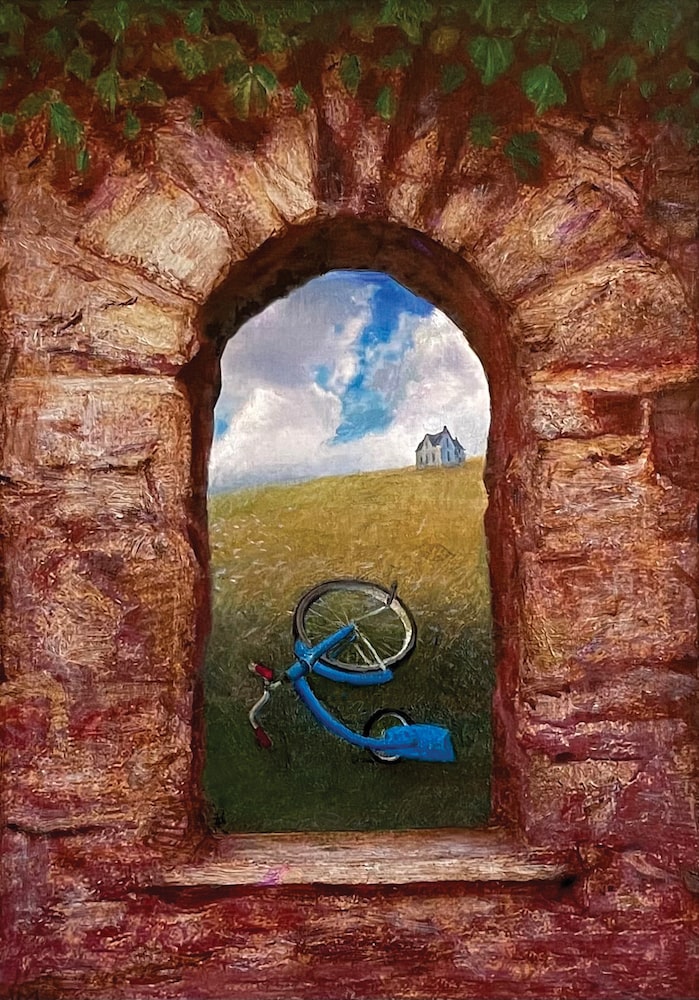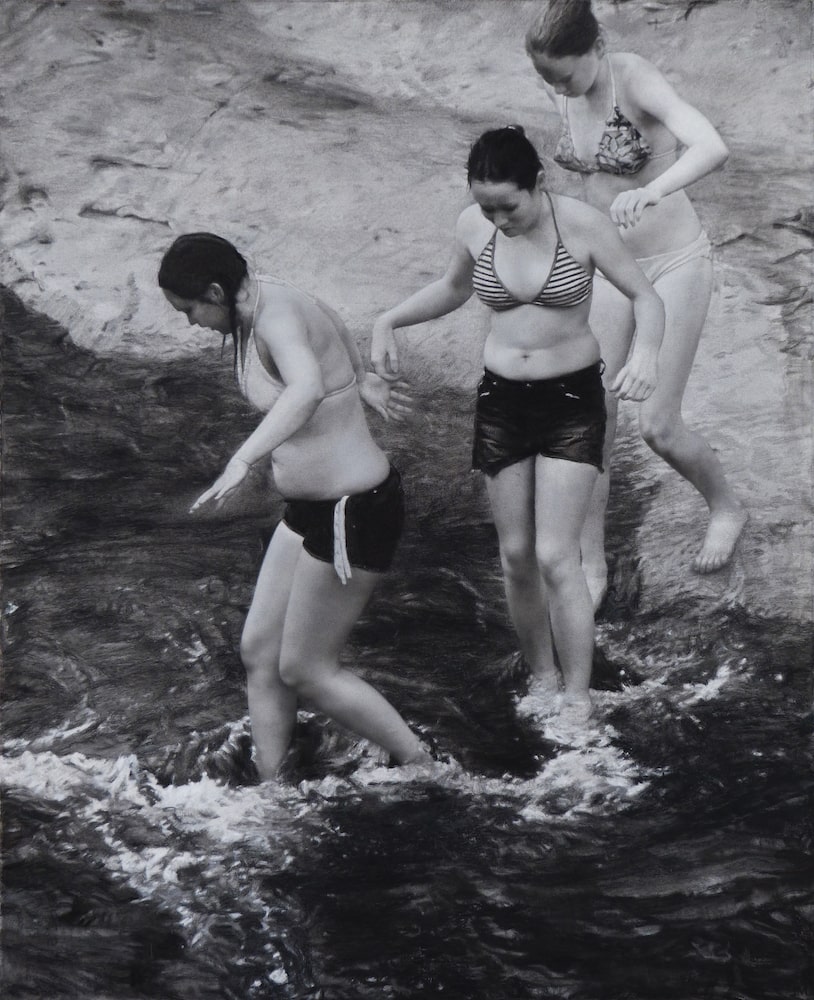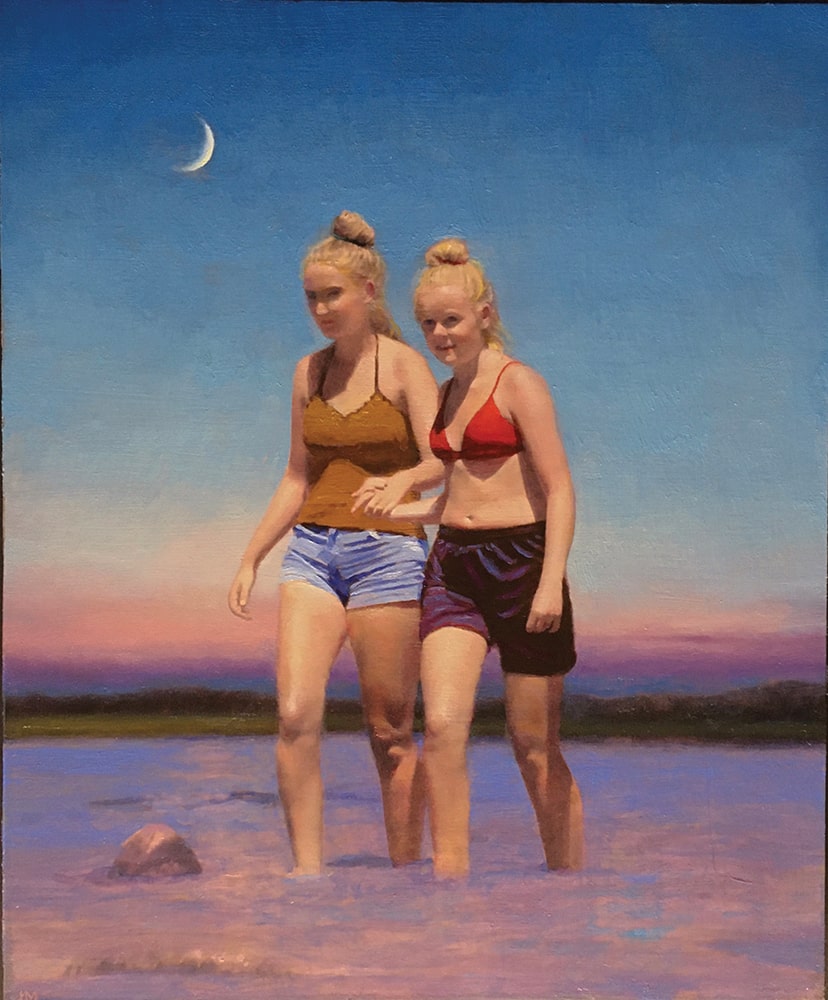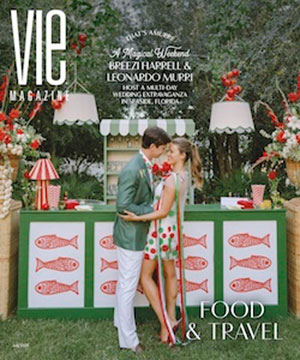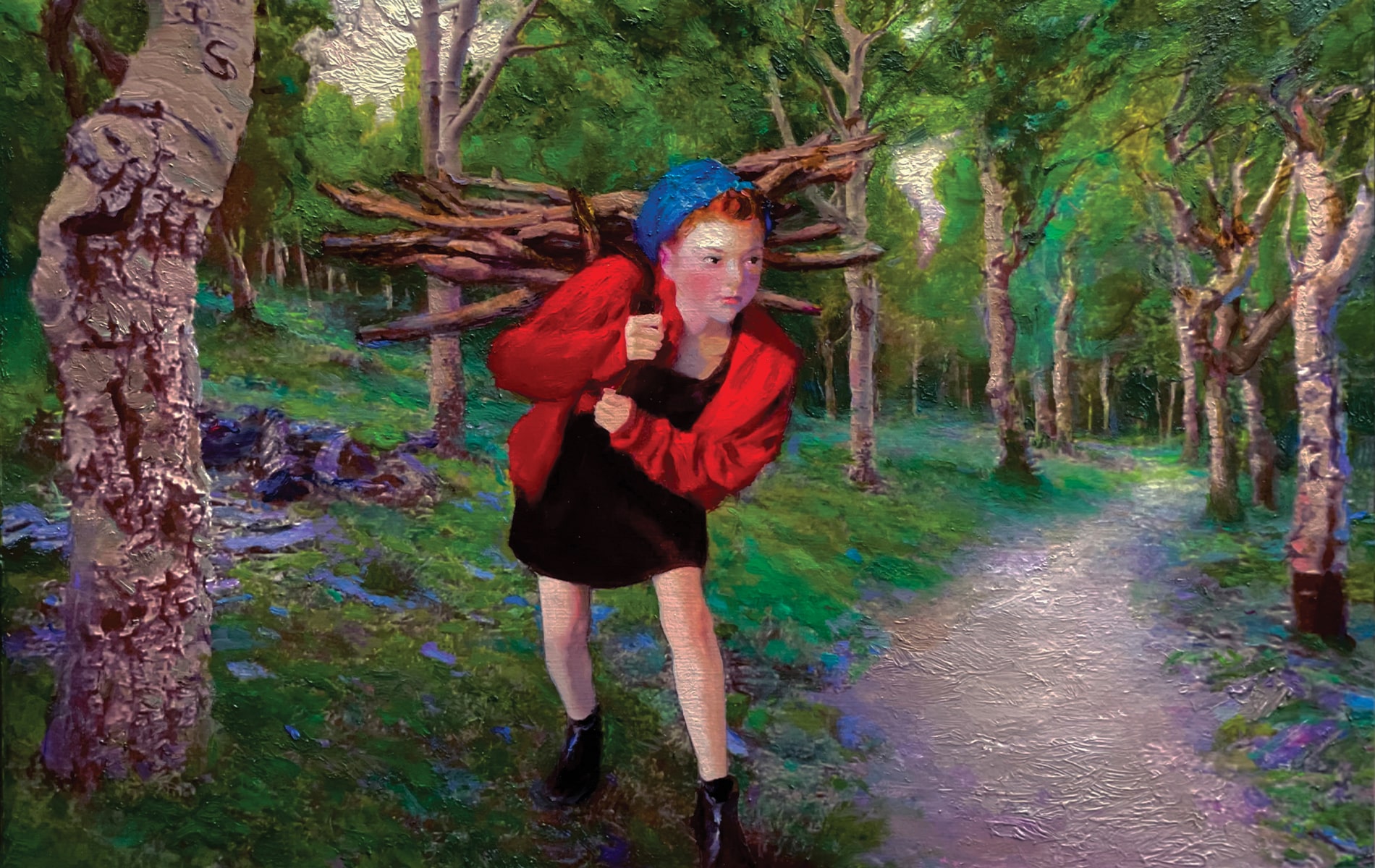
vie-magazine-joseph-miller-art-hero-min
Crossing III | Artwork by Joseph A. Miller
A Conversation with Artist Joseph A. Miller
Drawing from Experience
Interview by Jack Kirkendall | Art by Joseph A. Miller
“I remember being a child looking at the thin paper edge of a page of my copy of Where the Wild Things Are by Maurice Sendak,” says Joseph A. Miller, recalling how his journey into the world of art began with a simple childhood fascination. Reflecting on his earliest memories, he says the magic of Sendak’s famous children’s book really impacted his imagination. Supported and nurtured by his family, Miller’s passion for art flourished throughout his educational and professional careers, from his undergraduate education at Kutztown University of Pennsylvania to his master’s of fine art in painting and drawing at Southern Illinois University at Carbondale and working with the Security and Art Conservation departments at the Philadelphia Museum of Art. This led him to a fulfilling role as a professor at SUNY Buffalo State.
VIE: Has your career as a professor influenced how you approach creating art?
Joseph A. Miller: Yes, because when I’m teaching and demonstrating, I have an audience. There is a performative aspect of teaching studio art that is mutually beneficial to the students and the performer because of the speed at which the performance must take place. I am forced to take chances, solve visual problems that I would not necessarily create for myself, and work at a faster pace than I would on my own. Teaching, for me, is a symbiotic activity. My students benefit from observing as I make the best of happy accidents, and I get the thrill of helping them learn approaches to creating that might be new to them. Then, back in my studio, on my own, I have a bunch of new tools in my toolbox learned from my classroom demonstrations. For example, recently, after demonstrating my own version of gold-leaf gilding for one of my students, I placed a red rose on some gold leaf she had laid down. It was beautiful and reminded me of a Gustav Klimt painting. Now, I’m inspired to do something of my own that combines a figure, a flower, and gold!
VIE: Out of all the places your art has been showcased, what was the most rewarding collection it has graced?
JM: While I have been fortunate to have exhibited my work in many galleries, art centers, and museums across the US and as far away as the Ostrobothnian Museum in Vaasa, Finland, my most rewarding exhibition was one of my earliest back in December of 1994 at a small business called the Farmer’s Basket in Stroudsburg, Pennsylvania. I was honored and thrilled that the owners, Mark and Karen Williams, allowed me to showcase one of my first large figurative paintings in a back room among the fruit, vegetables, and Christmas lights. It was a pleasure to eavesdrop on people whispering their thoughts to one another as they stood in front of my painting! I’ll never forget that thrill and how much it meant to me to have that opportunity.
VIE: What initially inspired you to explore the context of power, enchantment, play, and vulnerability in your art?
JM: Being a child inspired me. I have a vivid memory of what it was like to be young—the wonder and excitement, as well as the curiosity and the fear. For me, those themes are the most natural ones to explore artistically because all those ideas are ever-present in our lives in one way or another.
VIE: In your art, how can light and location alter the intended final feeling for the viewer?
JM: I enjoy exploring and expressing the effects of light and atmosphere because I am interested in atmospheric perspective and selective focus. We have binocular vision; we can only focus on a small portion of what is in our field of vision. Everything else is blurry to a varying degree. For example, notice the soft focus on all the features of Johannes Vermeer’s Girl with a Pearl Earring. Everything comes into focus at her left eye. Vermeer so delicately blurred all her other facial features to highlight and call attention to that eye. If that painting were a song, her left eye would be the lead singer.
Another quality I try to convey in my art is a strong feeling of place, whether observed or invented. To return to the music analogy, I feel that by providing the convincing illusion of a stage, the musicians in my creations are free to occupy that stage and perform in their various roles.
VIE: How does the significance of childhood impact your artistic vision?
JM: I felt both powerful and vulnerable as a child. Powerful and invincible because so much of life appeared to be in front of me, but vulnerable because I felt small compared to the rest of the universe. As I get older, I feel even smaller in comparison to the enormity of everything. But I feel powerful for different reasons: I feel powerful because of my genuine enjoyment of life and my gratitude for the love of my wonderful wife, Christine, my job teaching at Buffalo State, and my artistic abilities.
VIE: You create emotional depth and introspection in the characters pictured. How do you infuse them with such personality?
JM: So much of what I do with my art comes from paying attention to all the things in life I find conducive to artmaking. In other words, as I walk through life, I ask myself, “How could this work in a painting or a drawing?” How does the sky, for example, look different when I face east rather than west in the evening? How can a physical gesture of one of my characters convey a convincing emotion? How can I express humidity, time of day, or the season by the way I depict light and color falling on form? How can I evoke questions from the viewer’s imagination?
VIE: Do you find it easier to make the viewer feel something when the work is dark and humid or bright and hopeful?
JM: I am most at home in the dusky evening light, where I can play hide-and-seek in the dark shadows!
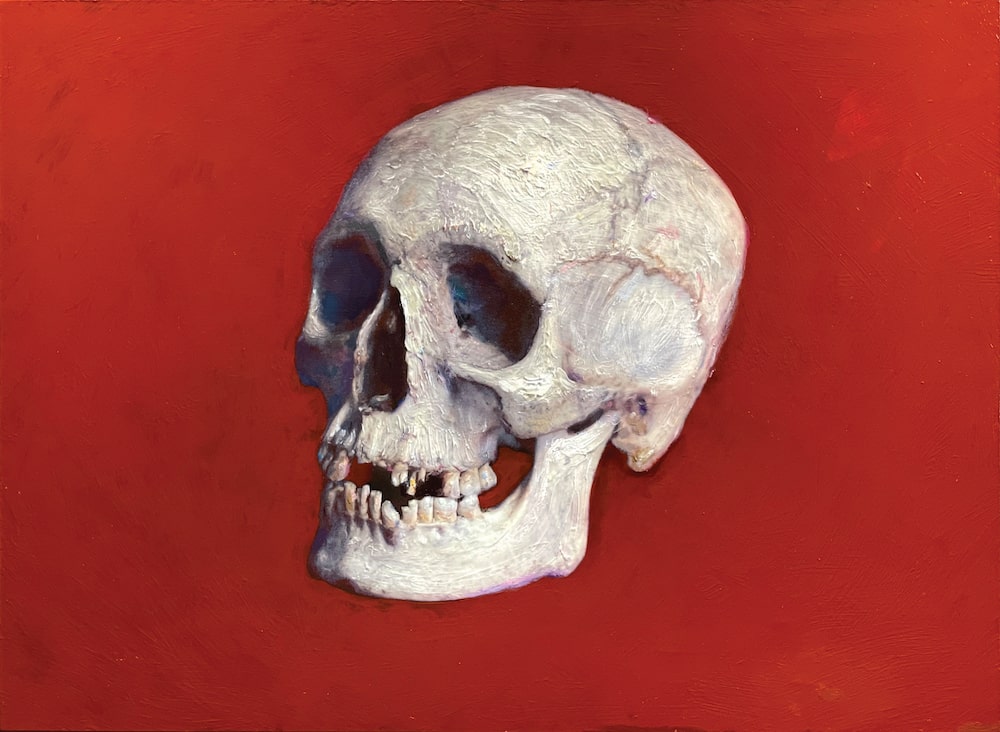
vie-magazine-joseph-miller-art-3-min
Memento Mori by Joseph A. Miller
VIE: Many of your compositions suggest an event is about to occur or has recently happened. While creating these works, do you keep the circumstances open for interpretation or have a set idea of the event? What practices do you use to let the audience know if it is the latter?
JM: I do my best not to let my audience know. I’m much more interested in presenting visually poetic questions than answers.
VIE: Bodies of water, such as oceans, lakes, and streams, are common in your recent works. Do these locales have specific symbolism?
JM: Yes. I am intrigued by the colorful patterns in water, and I love reflections. I grew up in rural Pennsylvania along the Delaware River near the Delaware Water Gap, which one of my favorite American landscape painters, George Inness, painted several times during the nineteenth century. I learned early on through direct observation that water is not always blue. Water is a mirror that reflects the trees, the clouds, the changing sky, and all the colors of life and death. It reflects the colors of a figure wading knee-deep at the water’s edge. It reflects a crow leaving its footprints in the riverbank mud as it contemplates the catfish just out of reach. It causes me to reflect on all kinds of things.
VIE: Thank you, Joseph!
— V —
Joseph A. Miller is an Associate Professor of Art at SUNY Buffalo State, where he has taught drawing and painting since 1997. Miller’s work is in numerous public and private collections. It has been shown internationally in Finland, China, Poland, and the Czech Republic, as well as across the United States from Berkeley, California, to Cambridge, Massachusetts. His work is represented by the Art Dialogue Gallery in Buffalo and the West End Gallery in Corning, New York. You can find more information at ArtDesign.BuffaloState.edu/directory/joseph-miller.
Share This Story!
KEEP UP WITH THE LATEST STORIES FROM VIE



